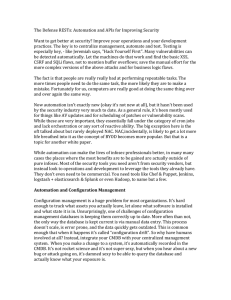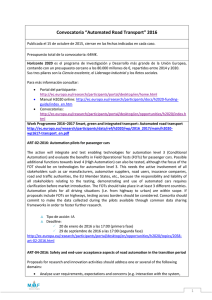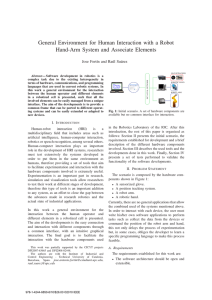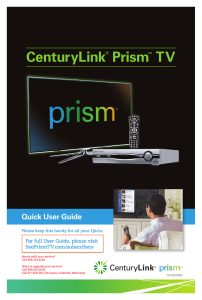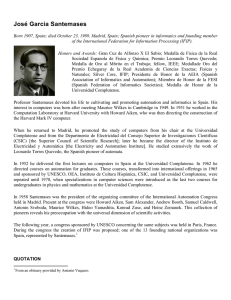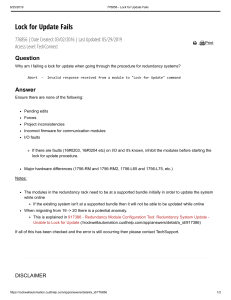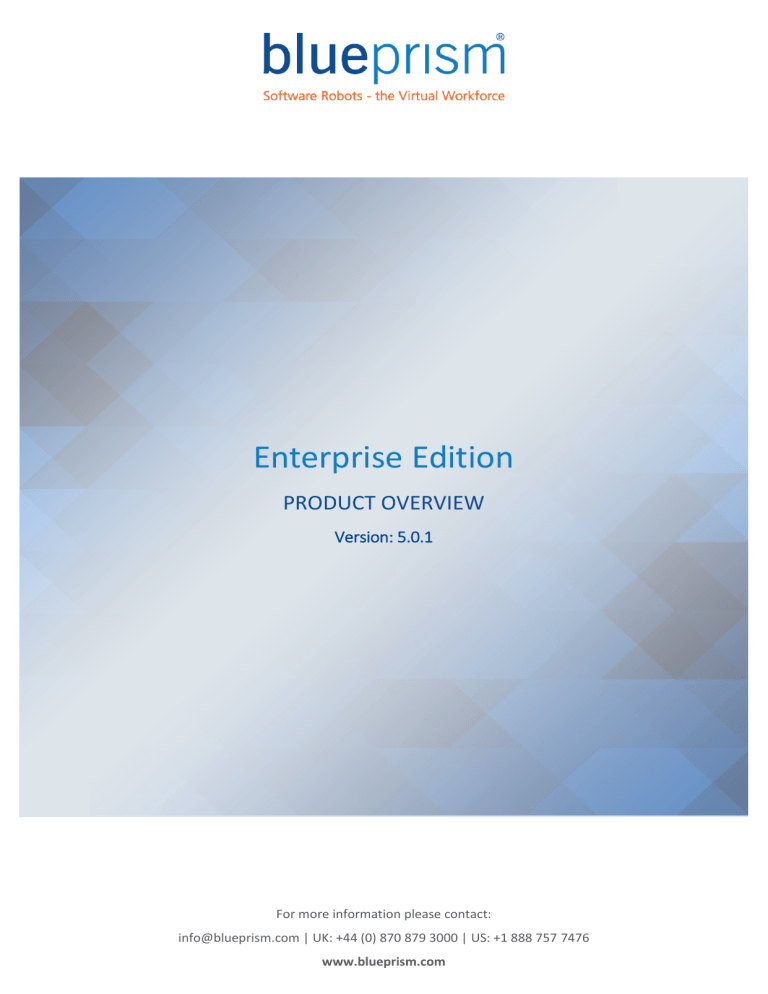
Enterprise Edition PRODUCT OVERVIEW Version: 5.0.1 For more information please contact: [email protected] | UK: +44 (0) 870 879 3000 | US: +1 888 757 7476 www.blueprism.com Contents Introduction ..................................................................................................................................................................3 Executive Summary .......................................................................................................................................................4 Robotic Process Automation .........................................................................................................................................5 Highly versatile, flexible, and architected to enhance IT security .............................................................................5 Increased operational agility .....................................................................................................................................5 Code free development with a methodology established through strong governance ............................................6 Increased quality, consistency and productivity .......................................................................................................7 An enabler for delivering business insight through Robotic Analytics ......................................................................7 About the Blue Prism Product .......................................................................................................................................8 Implementing Blue Prism ..........................................................................................................................................8 Deploying Blue Prism within an Enterprise Architecture ..........................................................................................9 Product architecture ...............................................................................................................................................14 Next Steps ...................................................................................................................................................................19 The information contained in this document is the proprietary and confidential information of Blue Prism Limited and should not be disclosed to a third party without the written consent of an authorised Blue Prism representative. No part of this document may be reproduced or transmitted in any form or by any means, electronic or mechanical, including photocopying without the written permission of Blue Prism Limited. © Blue Prism Limited, 2001 – 2016 ®Blue Prism is a registered trademark of Blue Prism Limited All trademarks are hereby acknowledged and are used to the benefit of their respective owners. Blue Prism is not responsible for the content of external websites referenced by this document. Blue Prism Limited, Centrix House, Crow Lane East, Newton-le-Willows, WA12 9UY, United Kingdom Registered in England: Reg. No. 4260035. Tel: +44 870 879 3000. Web: www.blueprism.com Commercial in Confidence Page 2 of 19 Introduction Blue Prism has spent over 10 years developing an enterprise Robotic Automation Platform which is robust, highly scalable, powerful and flexible. This document introduces Robotic Process Automation, and provides guidance on building a capability as well as an overview of the Blue Prism software that underpins the platform. This document is intended for both technical and business users who want to understand: What is Robotic Process Automation? What benefits will Robotic Process Automation provide? Are there specific business functions that are particularly suited to Robotic Process Automation? What factors should be considered when implementing Robotic Process Automation? How does Blue Prism deliver Robotic Process Automation? What are the strengths of the Blue Prism implementation and adoption methodology? What key features and capabilities does Blue Prism provide and what are the benefits of those features? Commercial in Confidence Page 3 of 19 Executive Summary Robotic Process Automation provides organisations with an agile virtual workforce that follow rule-based business processes and interact with the systems in the same way that users currently do – Blue Prism enables this, but in a way that is far more efficient as well as being secure, consistent, reliable, and scalable. Blue Prism complements traditional IT solutions such as BPM and front office productivity tools. It provides a universal and consistent back office automation platform with embedded controls and governance that is code free and managed by the business. Individual organisational demands often dictate the need for customisation of strategic IT platforms. Robotic Process Automation provides an alternative to software-specific customisation that offers three clear advantages: 1. Development is not constrained by the boundaries of the enterprise software, so solutions are implemented with greater flexibility and speed, and at lower cost. 2. There is an inherent layer of structure, governance and auditability that allows organisations to build a centralized capability for managing and implementing process automation across multiple platforms and technologies. 3. The automation library provides the ability to identify and update individual system touch points, enabling organisations to respond to system changes, more swiftly, without any coding, and without the need to initiate a formal software project. The methodology promotes a robust framework for introducing, managing, and controlling the virtual workforce. The platform is being actively used to achieve operational agility in some of the most demanding environments including: Banking, Utilities, Telco, Healthcare and the BPO industry. The strict standards that our customers insist upon for security, data integrity and operational resilience are at the heart of the Blue Prism platform and combine to provide a solution for use in highly regulated markets Commercial in Confidence Page 4 of 19 Robotic Process Automation “robotic automation…enables organizations to automate existing user actions – as if the user were moving through and across their current raft of applications”1 Robotic Process Automation provides a capability for automating processes that would otherwise be executed manually by humans, or by customising existing IT systems. When adopted alongside traditional IT development, Robotic Process Automation extends the reach of technology with a higher level of automation, a significantly lower level of investment and greater speed to deployment. There are a number of benefits and advantages associated with the adoption of a Robotic Process Automation capability within an organisation. Highly versatile, flexible, and architected to enhance IT security A Robotic Process Automation platform is designed to interact with the user interface of existing applications. A software ‘robot’ securely logs into an application and manipulates the presentation layer in the same way that a user would but in a controlled environment. This has two clear advantages: It operates within the same boundaries as a user (e.g. security controls and access rights) and is noninvasive which means it will never compromise the integrity of the application. It is entirely technology agnostic and can be used with any application, including thin client (e.g. Citrix). The implication is that Robotic Process Automation is a capability that can be leveraged across any industry and applied in almost any functional capacity where there is data driven, rule-based processing activity. Increased operational agility The end-to-end delivery lifecycle for automating processes using Robotic Process Automation is very short. Often a process is configured to be production strength, tested, deployed and be operational within one to two months and, in contrast to traditional IT projects, benefits are realized incrementally as each process is deployed into the live environment. Robotic Process Automation initiatives often achieve an in-year payback, and the cost of establishing a Center of Excellence (CoE) capability is easily justified by the benefits returned to the organisation. Robotic Process Automation also provides operational flexibility since the robots are considered a ‘virtual workforce’. Once a robot has been ‘trained’ in a particular process, that same process can be instantly deployed to all available robots. Whilst training a robot may take longer than training a single human, once the process knowledge is available to one robot, it is available to all. The result is complete and unconstrained scalability. This benefit is compounded when considering three other characteristics of a Robotic Process Automation capability: A library of automations is built up to form a central repository of shared and re-usable components that form an extensible and maintainable foundation of Robotic Automation Processes. An effective platform for Robotic Process Automation allows for the reuse of system interaction points or objects, enabling new processes to be assembled very quickly. Automations are scheduled and managed centrally to allow the overall operational workload to be balanced across all available robot runtime resources. With Robotic Process Automation, operational demand is managed far more effectively as the virtual workforce is re-directed to address real time peaks and troughs in demand with no training or recruitment overhead. 1 Feb 2014: Forrester – Building a Center of Expertise for Robotic Automation Commercial in Confidence Page 5 of 19 Code free development with a methodology established through strong governance “Robotic automation software is designed to rapidly model and deploy the automation so it can be performed by individual delivery teams or process excellence resources without extensive and lengthy IT resources.”2 A key objective of a Robotic Process Automation capability is to allow the business to respond rapidly to changing priorities and customer demands, without increasing the stress on overloaded IT schedules. This confers a dual benefit to an Enterprise organisation: the IT community is freed up to concentrate on the transformative and strategic initiatives that require extensive investment; whilst the business community is empowered to manage, shape and deliver business imperatives driving improved efficiency effectiveness and customer service. A code-free development approach means that business users drive the design and implementation of automations independently, only requiring IT involvement as part of the governance and sign-off process. This light-touch approach will accelerate an organisation’s responsiveness and enable highly-technical IT resource to focus on high-value, strategic IT change. Furthermore, when established as a formal capability within an organisation (e.g. as a CoE), Robotic Process Automation supports a framework that enhances both business and IT compliance by: 2 Deploying governance processes that can be flexed to accommodate the specific needs of individual organisations across any industry. Preventing the occurrence of so-called ‘grey-IT’ i.e. the implementation of tactical, bespoke, time-saving solutions that, at an enterprise level drive inconsistent practices using brittle and unstable solutions which indirectly introduce complexity and operational risk into the organisation. October 2013: HfS – Framing a Constitution for Robotistan Commercial in Confidence Page 6 of 19 Increased quality, consistency and productivity “[Robots] can be trained to process rule-based activity in an organization’s information processes, improving accuracy and efficiency.”3 Significant operational issues (often resulting in avoidable demand in a customer contact center) are frequently caused by poor process adherence. The root cause is usually as a result of: Data integrity challenges across a complex application landscape. A high degree of variability in manual transactional processing. Robotic Process Automation provides a level of consistency, best practice and stability by eliminating human error which delivers a downstream cost avoidance benefit and enables people to focus on higher value decision-making and customer contact. The virtual workforce also operates differently to a human counterpart. Robots do not get tired or bored, and in terms of pure transactional processing, it is possible to achieve far more efficiency out of a robot for rote and repetitive rule-based work than a human equivalent. This allows humans to focus on higher value activities which require communication, empathy, judgement-based problem solving etc. A robot can run 24/7 and will execute the most tedious and repetitive activities with precision and without interruption. Certain activities such as data validation, reconciliation, or retrieval of specific information from a large data sample will typically be executed with far greater speed and granularity than a human could possibly achieve. The result is a rate of productivity that is a minimum of double, and up to ten times, that of a human equivalent. An enabler for delivering business insight through Robotic Analytics In contrast with human processing activity, every transaction executed by a robot is recorded centrally to provide a full audit trail which is rich in latent process insights. This activity – the recording and the granting of access to such data - is carefully controlled and configured in order to respect the data governance requirements associated with handling sensitive or regulatory information. The impact is that Robotic Process Automation can generate a large amount of operational and business data that can be converted into valuable business insight via analytics. A new level of operational process insight is unlocked through the ability of the robots to record every action they take, every piece of data they enter and retrieve from the systems of record and every process rule that is fired and every value of threshold exceeded. 3 April 2013: Gartner – Cool Vendors in Business Process Services 2013 Commercial in Confidence Page 7 of 19 About the Blue Prism Product “Blue Prism reduces process costs, increases speed and improves accuracy through its robotic automation platform, which operates other applications in the form of a virtual workforce.” 4 The Blue Prism software product is an enterprise-strength Robotic Process Automation Platform which is robust, highly scalable, powerful and flexible and designed from first principles to provide organisations with a virtualized robotic workforce. Whilst the deployment of the solution is commonly the responsibility of IT, Blue Prism is unlike many other technology solutions because, once deployed, it is designed to be managed and owned by an accredited operational team or Center of Excellence spanning operations and IT. It is code free and can automate any software in a non-invasive way meaning it can be easily applied to processes in any department across the organisation. Out of the box, the Blue Prism platform meets the strict standards that our customers insist upon for security, control, data integrity, change management, scalability, robustness, and scheduling. These standards combine with the established implementation and adoption methodology and framework to define Blue Prism as an enterprisestrength capability which offers businesses a new way of working through a virtual workforce. Implementing Blue Prism Recognising that a successful implementation of a Robotic Process Automation capability requires involvement at both strategic and operational levels within a business, Blue Prism has developed a methodology that addresses the requirements and answers the concerns of individuals irrespective of their level of their seniority or technical experience. It focuses on meeting the concerns and requirements of both IT managers and senior stakeholders, and includes a number of tools for: Developing a defensible business case. Identifying priorities for process automation. Training and up-skilling of all roles within a Blue Prism capability to ensure high quality, sustainable processes. Blue Prism is implemented in an agile way meaning that benefit realisation is both immediate and incremental, ensuring that the business will start to see returns on investment within a matter of weeks. This helps to maintain a strong depth of buy-in from the project sponsors and stakeholders. 4 Jan 2014: Gartner – Predicts 2014: Business and IT Services are facing the end of outsourcing as we know it Commercial in Confidence Page 8 of 19 Deploying Blue Prism within an Enterprise Architecture Blue Prism provides the most demanding and complex businesses with the flexibility, scalability and governance requirements demanded of a strategic application. The combination of an enterprise-strength platform with bestpractice methodology enables organisations to extend the reach of technology further and faster than ever before. Blue Prism technology platform Blue Prism, powered by Microsoft SQL Server and built on the established and proven Microsoft .NET Framework, automates any application and supports any platform (mainframe, windows app, WPF app, java apps, web apps, etc.) presented in a variety of ways (terminal emulator, thick client, thin client, web browser, Citrix and web services). Blue Prism provides a single capability for automating all of the applications used within an organisation. Operating model: business control and visibility Designed for a multi-environment deployment model (Development, Test, Staging, and Production) with both physical and logical access controls, Blue Prism includes a centralized release management interface and process change distribution model providing high levels of visibility and control. Additional control is provided to the business via a centralized model for process development and re-use. Governance, compliance and change management Designed with enterprise organisations in mind, Blue Prism is proven to support PCI-DSS, HIPAA and SOX compliant processes. A large number of controls are in place to provide the necessary security and governance, including: Segregated user roles (developers, release managers, controllers). Automated credential management for robot access to the network and specific applications. Audit history for: system access; configuration changes; and process execution. Side-by-side comparison of process changes. Infrastructure Through use of distributed virtualized robots Blue Prism is highly scalable and can be provisioned in the cloud or as an on-premise enterprise deployment. The grid based architecture enables high availability, high performance, failover and disaster recovery scenarios to be provided as well as addressing potentially significant seasonal variations in operational demand. Commercial in Confidence Page 9 of 19 IT security Active Directory integration aligns the user access management of Blue Prism with other enterprise applications. There are also high levels of flexibility for both encrypting the stored data as well as securing the communication between various Blue Prism resources. Secure storage of network and software credentials used within the processes along with a number of safeguards allow for passwords to be completely private from any of the administrators whilst providing full oversight of their use to the IT security team. Process configuration Blue Prism configuration is code free, logical and highly visual. Processes are designed to be created, maintained and managed by business users, process excellence engineers and subject matter experts. Building blocks are designed for re-use and are interlinked to produce end to end processes which are stored centrally, and: Accelerate the development of new processes. Aid in the standardisation of operating procedures across business areas and operational teams Lower the cost of maintenance. Reduce the time required to adapt to third party system changes. This object orientated approach allows for all processes to be updated by modifying a small number of centralized objects. Commercial in Confidence Page 10 of 19 Automation technology Irrespective of how an application is presented (terminal emulator, thick client, thin client, web browser, Citrix and web services), Blue Prism provides the ability to automate any application (e.g. SAP, Lotus, Office, Exchange, custom applications etc.). It supports advanced automation techniques including image recognition, automatic handling of form layout changes of third party applications, and optionally allows advanced data processing by leveraging JavaScript and .NET extensions (developed by in house or third party IT providers). Process execution and control Blue Prism’s Control Room provides a centralized administration console for controlling, monitoring, executing and scheduling process execution on the distributed robots. It uses automated runtime distribution, without the need for compiling and distributing execution instructions across the network. The Release Manager module provides the facility to package processes for distribution between environments (e.g. development, test, production) whilst also providing visibility of process dependencies. For system owners and those responsible for change management, it represents a permissions based, managed and audited mechanism for encapsulating and deploying changes from one environment to another. Work Queues within Control Room provide support for both independent and assisted automations by leveraging the following functionality: Business referrals. Process alerts. Code-free configurable exception handling. Reporting and analytics Blue Prism provides high quality data that can be used to drive meaningful BI and MI reporting and identifies both inline process statistics and real-time operational analytics by recording each and every: System login. Change management action. Decision and action taken by each robot. Commercial in Confidence Page 11 of 19 Training, accreditation and support Training courses are delivered via the self-led online training platform, or alternatively in a more formal classroom environment by a Blue Prism accredited training partner. The strong partner community ensures that there is a wide range of expertise available across all industries and specialisms, and provides support and mentoring for individuals or organisations seeking to gain recognized certification. The Blue Prism accreditation scheme provides confidence to clients and partners that the members of their Robotic Process Automation team(s) have consistently demonstrated their skills and successfully completed the training relevant to their role (e.g. capability managers, business analysts, controllers, and developers). Blue Prism technical support is provided through: A comprehensive help guide within the product. A series of data sheets via the online portal which provides detailed information on a variety of topics. Blue Prism technical support via the technical support helpline, email, and the online support portal. Blue Prism accredited partners through bespoke support contracts which are tailored to the needs of a specific organisation. Blue Prism also takes a leading role in supporting thought-leadership through sponsorship of the independent Operational Agility Forum (OAF). Commercial in Confidence Page 12 of 19 Delivery methodology Designed as an enterprise capability platform, Blue Prism has developed a methodology that is focused on far more than software deployment. The proven delivery methodology ensures implementation success beyond first handful of processes by: Identifying the processes that are best suited to Robotic Process Automation. Establishing the benefits case for Robotic Process Automation encouraging organisation-wide recognition and adoption. Implementing the required infrastructure, governance, and support framework enabling a Robotic Process Automation capability to run efficiently and effectively. Defining a best practice approach for process configuration which increases the potential for automation and accelerates the development life cycle. Providing the necessary skills to operational resources via a rolebased training and mentoring accreditation. Commercial in Confidence Page 13 of 19 Product architecture Blue Prism v4 is at the heart of the operational architecture supports deployment across a range of environments. Support for both distributed or centralized servers along with a component based architecture provide the implementation with enterprise-strength capabilities. This overview provides information on two elements of the product: Core product areas: provides insight into a number of the work areas that are focused on the different roles of users (e.g. developers, release managers, controllers, and security/compliance teams). Deployment: includes information about the benefits of the Blue Prism deployment methodology with particular reference to the use of virtualized runtime resources. Core product areas At the core of Blue Prism’s architecture model is a design paradigm that enables organisations to grow the platform in line with their ambitions. Starting with a single robot configured using a local database, the same platform can be configured and deployed to support a distributed grid of many robots and servers across a multi-site or cloud based implementation. The software also offers options to integrate with strategic technology assets, such as Active Directory and hardware encryption, or to use native technologies to harness the same principles with fewer stakeholders. The four main areas of the product that are used for building, testing, releasing and controlling processes are detailed below: Object Studio Process Studio Control Room Release Manager Commercial in Confidence Page 14 of 19 Object Studio Enables users to create and define, build and test re-usable building blocks (Objects) that provide instructions to the runtime resources (robots) on how to interact with a given software application or tool. Any type of application can be modelled in a non-intrusive way via the presentation layer using Object Studio – this includes legacy software as well as applications that are presented using thin client technology (e.g. Citrix). Users build a hierarchy of screens and controls which provide an easily maintained library of system elements for re-use across any number of process. Blue Prism is also supplied with a number of built in business objects, providing off the shelf functionality for functions such as Microsoft Office automation, e-mail automation, encryption and credential management. Commercial in Confidence Page 15 of 19 Process Studio Provides the orchestration layer to enable the design, build, and test of end-to-end processes. Process Studio provides an array of options for handling and processing data and work items including decision trees, exception handling, reacting to the speed of target applications as well as use of the Objects created in Object Studio. This highly flexible, reusable model enables processes to be rapidly configured using ready-made and tested business logic and validation rules. Parameterisation can also dynamically drive the behaviour, or control the implementation, based on the context in which it is running. Process Studio has a similar interface to Object Studio, and allows business logic, control loops, variables and object calls to be sequenced and tested in a visible business flow. Designing a new process using Process Studio is simple yet powerful. Using the components provided within the product, complex business processes can be rapidly automated. Commercial in Confidence Page 16 of 19 Control Room Provides users with a day to day operational environment that is used to control, monitor and schedule the runtime resources (robots). The interface enables controllers to monitor and review the status of inter-connected runtime resources in a given environment as well as facilitating the following common actions: Manual intervention for the purpose of triggering process actions including: starting, stopping and retrying processes as-well as viewing and setting process variables. Automated process schedule configuration. Access to detailed management information. Drill down into Blue Prism work queues. Release Manager Primarily used by release managers, Release Manager gives a detailed visibility of the process elements that are associated with a given series of processes to provide streamlined and automated change management functions. In order to effectively package objects, processes, schedules, work queues and other dependencies, Release Manager allows administrators to move inter-dependent modules of configurations between environments using a repeatable release pattern. This is particularly useful for moving processes between various environments as recommended by Blue Prism best practice (e.g. Development, Test, Staging, and Production). Commercial in Confidence Page 17 of 19 Deployment Blue Prism is deployed using a grid based virtualized runtime and control methodology, where lightweight Blue Prism resources are interconnected within the data center through a series of Blue Prism server components to a back end database. There are a number of key elements of the deployment methodology beyond those covered earlier in the document: Built on enterprise strength technology Powered by Microsoft SQL, and through use of centralized or distributed application servers, features such as resilience, high-availability and high performance are provided natively by the underlying technology. These technologies are also common place in many organisations which result increase the speed at which Blue Prism can be adopted into the infrastructure. Virtualized runtime resources Whilst it is possible for physical desktop PCs to be used as runtime resources, a number of benefits are realized when virtualized desktops are used. Virtualisation ensures that IT departments retain visibility and control over the provisioning and access, whilst also meeting security requirements. Additionally this approach provides a number of options for: quickly responding to peaks in demand; disaster recovery scenarios; rapid provisioning of additional runtime resources based on virtual snapshots or images. Governance of IT The way in which Blue Prism is deployed provides IT departments with the control, visibility and flexibility that they need to be able to appropriately provision and support the solution, whilst at the same time providing operations teams the ability to work on automations within a controlled environment. This provides a corridor of governance whereby technologists are responsible for the underlying systems and technology, whilst the business is responsible for what the Blue Prism platform does on a day to day basis. Component based architecture The component based architecture of Blue Prism provides a high degree of flexibility and adaptability to the rapid deployment model along with options for scaling the deployment overtime. Cloud, on-premise or hybrid deployment Support for both distributed or centralized servers along with a component based architecture provide the implementation with not only enterprise-strength capabilities, but also flexibility - with options for deploying to a range of environments including: o Public Cloud. o Private Cloud. o On-Premise. o Hybrid mixture of the above. Monitoring and referrals Blue Prism processes have a full exception management capability which allows system exceptions and process referrals (e.g. items which require a human review) to be routed automatically, or manually, to designated processing or technical support teams. System monitoring Blue Prism resources and server components are fully integrated with Microsoft Windows event logging which allows third-party infrastructure monitoring solutions to report not only on the health and status of the underlying systems but also on any issues that may arise as a result of the runtime resources Commercial in Confidence Page 18 of 19 automating business applications. A variety of alerting mechanisms are available including email, SNMP traps and event logging. Queue management Work queues facilitate the load-balancing of items across the Blue Prism infrastructure to allow rapid and distributed processing of high priority work items. Advanced scheduler The powerful scheduling engine assists with maximising utilisation of the Robotic Process Automation platform by enabling processes to be initiated automatically and without the need for human intervention. It is underpinned by the request broker architecture and further includes the ability to schedule a process against a resource group enabling the workload to be distributed amongst a number of runtime resources. Web service support Where application integration via web services is required, Blue Prism is able to invoke most common web services and provides support for generating and interpreting both simple and complex data types for RPC/Literal, RPC/Encoded and Document/Literal web services. Additionally, Blue Prism automations can be exposed as web services for consumption by third party systems. Security The Blue Prism platform has been designed to meet the most demanding of security requirements. It captures all configuration changes by user and supports full enterprise audit and system management disciplines. Next Steps For further information on both the Blue Prism product and the wider topic of Robotic Process Automation, there are a number of white papers and references to thought leadership material available via the Blue Prism website (http://www.blueprism.com). To take advantage of a non-obligation live demo of the product or for further product information please contact your local Blue Prism office (http://www.blueprism.com/contact). UK 0870 879 3000 USA 1-888 757-7476 (1-888-75 PRISM) Other +44 870 879 3000 Email [email protected] Commercial in Confidence Page 19 of 19

